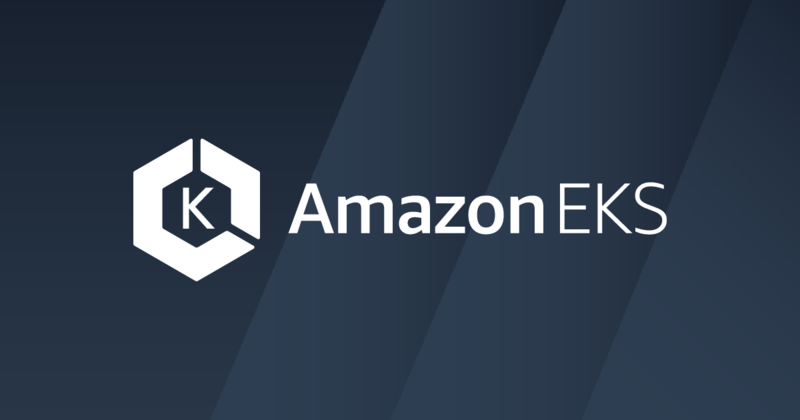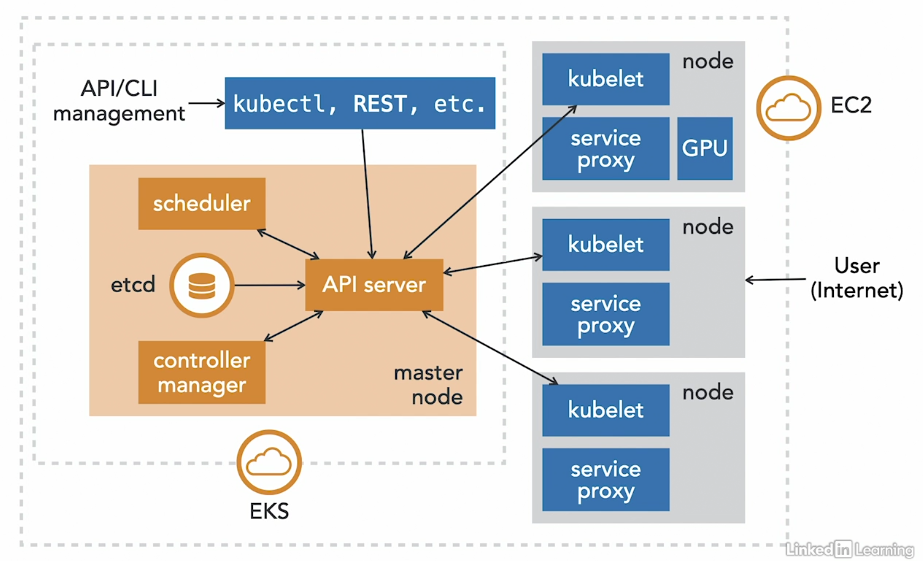Elastic Kubernetes Service (EKS)
Updated May 26, 2022 ·
Amazon EKS
Amazon EKS is AWS’s managed Kubernetes service that simplifies deploying Kubernetes by handling the control plane and its components for you. Users are responsible for managing where workloads run, such as on Fargate or EC2.

Traditional vs. EKS Setup
Traditionally, deploying Kubernetes required:
- Setting up master nodes and
etcd. - Configuring CA for TLS encryption.
- Managing monitoring, scaling, and authentication.
- Provisioning worker nodes.
With EKS:
- AWS manages the control plane
- Provides HA and scalability.
- Integrated load balancing, networking, and storage.
- Authentication via IAM.
- AMI for nodes can be customized.
- Container images can be stored through ECR.
What EKS Manages vs. What You Manage
The diagram below illustrates which components are managed by Amazon EKS and which require user management.

When you create you EKS cluster, AWS takes care of all of these under the hood:
- Master nodes and
etcdare set up for HA - IAM plugin is configured
- CA is enabled for TLS
- Autoscaling is activated
- Load balancers like NLB and ELB are provisioned
EKS Control Plane
The EKS control plane is fully managed by AWS.
- Highly available and dedicated to your account
- Uses native AWS components for seamless integration
- API server connects to
etcdthrough an ALB - Control plane is fronted by an NLB with fixed IPs
Pricing
What you pay for:
- EKS clusters (per hour).
- Resources for running applications (e.g., EC2, Fargate).
What’s free:
- The control plane.
For more details, visit the official Amazon EKS Pricing.